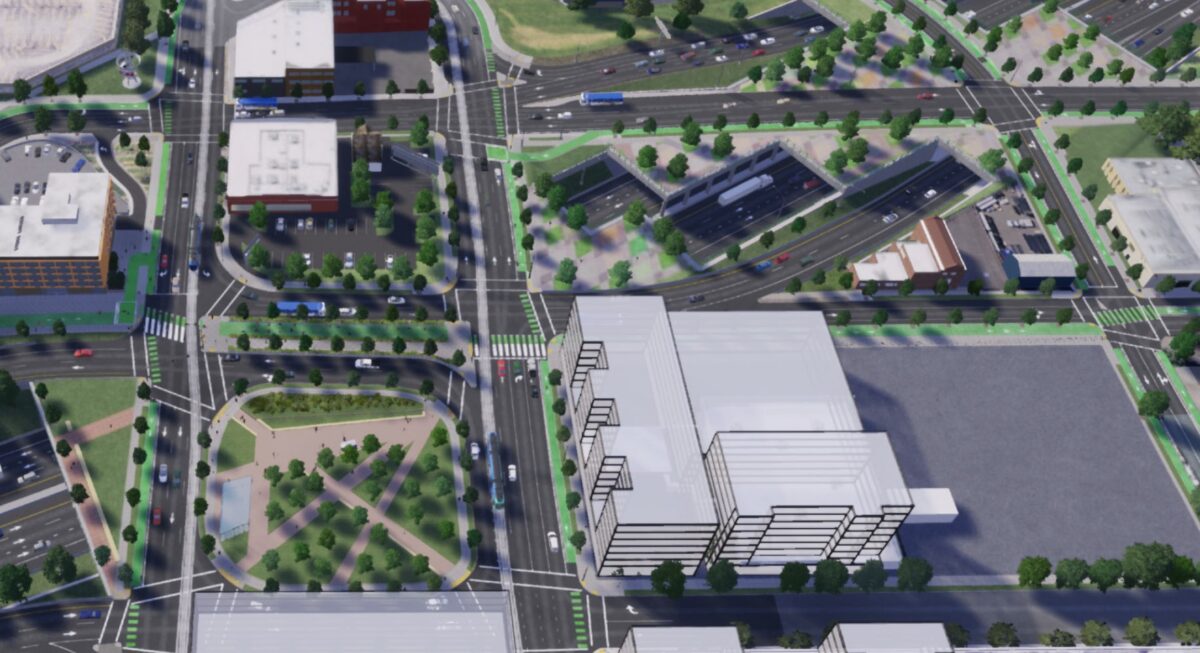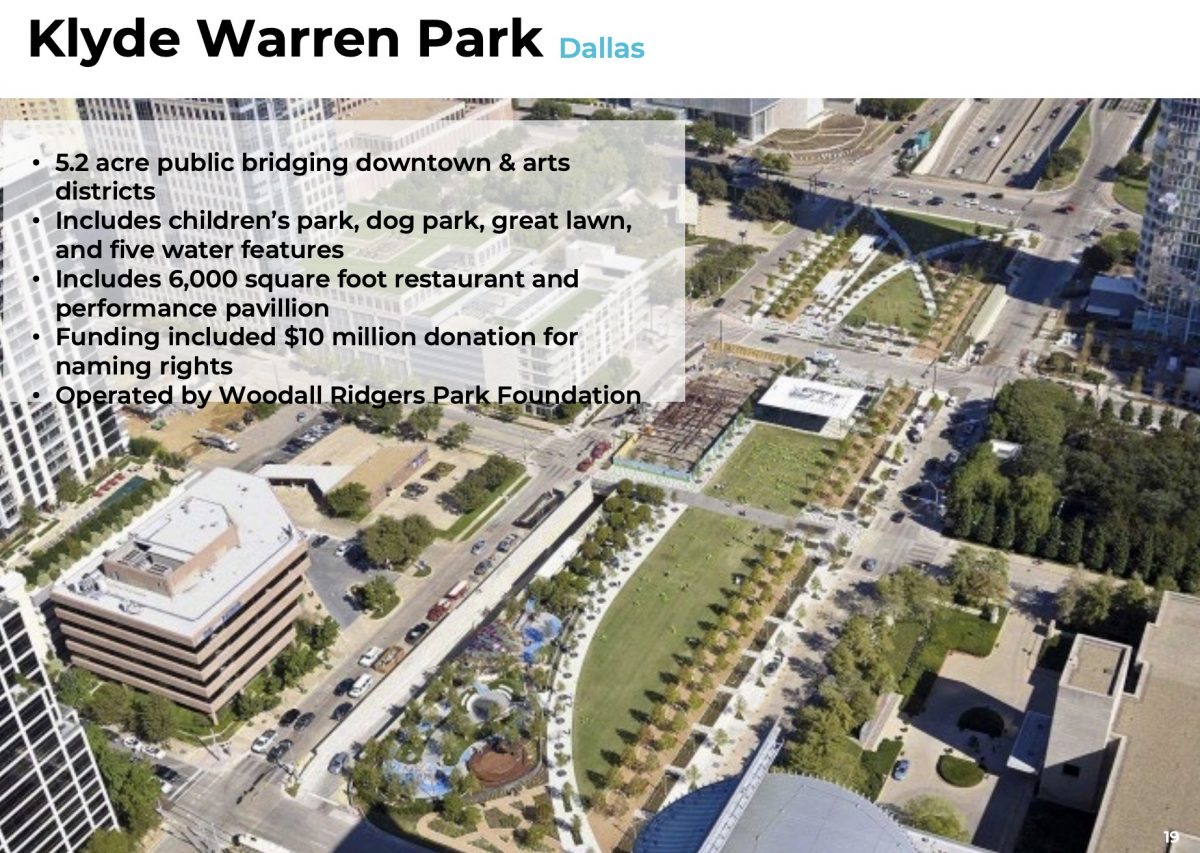
The Oregon Department of Transportation is wasting no time moving forward with the I-5 Rose Quarter project following the stamp of approval on the environmental review phase of the process.

Now that those obligatory federal hoops have been jumped through, ODOT is eager to move forward with design. Right now the project is in what planners refer to as “15% design,” which means the level of detail is just a relatively rough sketch of what might get built. ODOT’s next big milestone will be to reach “30% design” — and narrow specific design concepts down — by fall of 2021.
ODOT launched an online open house today to promote the project and garner feedback on two specific aspects of that 30% design phase: the highway covers and roadway space priorities.
Covers over 1-5 have been the source of much debate. They are key to ODOT’s rhetoric about “restored community connections”; but critics (City Observatory called them a “thinly-veiled gimmick for selling wider freeways”) say the agency is most likely to build park-like plazas instead of the high-rise residential and commercial developments that would truly spark a renaissance of the Albina neighborhoods the freeway has destroyed. So far, ODOT hasn’t committed to funding highway covers — estimated to cost between $200 and $500 million — that would be strong enough to carry buildings. Simple covers with a few park benches and bushes atop them would be much easier and cheaper to build.
Advertisement


Wording in the open house released today says the covers could be used to reconnect the street grid, support “community activities and gathering spaces” and “potentially structures.” ODOT has hired ZGF Architects to complete an “independent” assessment of lid designs and options. At a meeting of the project’s Executive Steering Committee on October 26th ZGF shared examples of covers from Dallas (Klyde Warren Park), Boston (Fenway Center) and Phoenix (Hance Park).
Based on survey questions, ODOT is considering a host of uses for the space above the covers including: parks, athletic fields, amphitheaters, vendors and food carts, features like fountains and plantings that evoke nature, and/or educational features to highlight the old Albina neighborhood.
When it comes to structures, ODOT is gauging support for buildings that would support affordable housing, market rate housing, “structural elements prioritized by the Black community”, buildings with “affordable space for Black community organizations and programs”, “community services such as healthcare and educational facilities”, or “Affordable, culturally supportive commercial space.”
There’s also a question about what types of transportation uses should be given priority on the new street grid which will have, “finite roadway widths to accommodate a variety of potential uses.” Survey-takers can rank sidewalks, bike lanes, transit lanes, auto and freight lanes, or on-street parking.
Check out the open house and take the survey here (the survey is at the end so you have to click through a few pages).
— Jonathan Maus: (503) 706-8804, @jonathan_maus on Twitter and jonathan@bikeportland.org
— Get our headlines delivered to your inbox.
— Support this independent community media outlet with a one-time contribution or monthly subscription.

